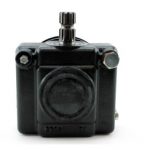People who are considering creating a garden may want to decide first if it is necessary to till the part of the lawn in which the garden will be located. The answer to the question is based on how much garden space you expect to have and the type of soil you have.
In general, tilling is supposed to help get a garden bed started quickly; not tilling may be slower in the creation of the garden, but it can improve soil quality over time.
If the area in which you want to place your garden has an abundance of clay, preliminary tilling may be beneficial because it permits you to breakup the soil before committing to a no-till method. The specifications you set up for your garden as well as the goals you have for that garden will ultimately determine which method is proper for you.
Advantages and Disadvantages to Tilling
The purpose of tilling is to break up the compacted or clay soil and introduce more oxygen and organic material to the soil. The process gets improvements and compost into the soil and prepares the dirt to be used within weeks.
However, this process also destroys the natural soil structure and exposes it to air and sunlight and this can result in less moisture retention and the development of a hard crust on the soil surface. Moreover, tilling stirs up dormant weed seeds and brings them up to the surface where they have a better opportunity of germinating.
If you do not till, then the natural soil structure is preserved and there is better moisture retention. This slows erosion and prevents water runoff and reduces the need to water during the growing season and lessens the leaching of minerals assuring better soil nutrition. The no tilling method also includes the use of a large amount of mulch, which builds soil quality and helps to suppress the growth of weeds.
No till methods take more time to build a garden than till systems because soil amendments are piled on top of the soil instead of being mixed into it. Several years are needed to build the healthy soil when you use the no till method. However, if you use this method, then after the first one or two years, gardening tasks including watering and weeding are significantly reduced.
So tilling should be performed for a specific purpose like getting more organic matter into the soil, breaking soil crust to permit water to enter or loosen the soil so that you can plant seeds or seedlings. Tilling is ideal if your soil is very compact or high in clay. Never till when the soil is wet because this destroys the structure of the soil and assists in creating compaction.
For a small garden, double digging with a spade or shovel will suffice for rotating the soil, but for a large area rototilling may provide the best results. If you till, then use cover crop that grows in the winter and can be tilled into the soil during the spring to compensate for damage to the soil. A cover crop adds organic matter to the soil and assists in rebuilding soil structure.
If you don’t till, then you will have to rely on heavy mulching for the first several years. This will increase soil quality and reduce weed seed sprouting. In addition, raise the planting beds to prevent soil compaction due to foot traffic.
If you want to start a new garden, break up the compacted soil or clay in the area and then apply a layer of 8-inches to 10-inches of compost mulch over the soil throughout the year. Move the mulch to the side in areas where you have planted seeds. Once a crop has finished, cover the soil again with a thick layer of mulch. Layering grass clippings and brown leaves or paper on to the soil instead of the mulch can help to lower costs.







